In 2008, salmon fisherman Mike Hudson was told he could not go to work. That year, months after one of the lowest recorded spawning returns of Central Valley fall-run Chinook, the commercial fishery was shut down. The season remained almost entirely closed for three years while fishermen collected disaster relief paychecks and waited for Chinook numbers to rebuild.
Now, as the state faces the most serious water shortage emergency in its history, environmentalists and fishermen are outraged that California farmers are still planting orchards in the bone-dry San Joaquin Valley. This region is irrigated with Sacramento River water, and critics say farmers are taking too much. Last fall, thousands of salmon were unable to spawn in the low and lethally warm water exiting Shasta Dam, and a recent field survey by California Department of Fish and Wildlife found several native fish species on the verge of extinction.
But Hudson thinks he has a solution: State and federal water managers, he says, should crack down on farmers with the same sorts of regulations used to manage fisheries. “Fishermen already have individual quotas, and crab and lobster fishermen have trap limits,” Hudson explains. “So why couldn’t we make production quotas for each farmer, and maybe impose tree limits?” Hudson also thinks commercial production of certain crops should be prohibited in particularly dry regions — an agricultural rendition of no-fishing marine reserves.
But such ideas seem a long way off. Gov. Jerry Brown called this month for mandatory 25-percent cutbacks on urban water use statewide. But California’s agriculture industry, which uses on average 80 percent of water consumed by Californians, was not asked to make any new sacrifices.
Of course, many farmers have already been hit hard by the drought. Fields have gone brown, and orchards have turned into graveyards of gray, skeletal trees. But the region is also lush with newly planted almond orchards, and overall acreage of the state’s most valuable tree crop has grown during the drought.
Leaders of the state’s agriculture industry have complained that many farmers will receive no surface water this year. However, such cutbacks do not necessarily reduce the net agricultural use of water. Last year, just 5 percent of the state’s irrigated land, mostly low-value field crops, was fallowed, according to Jeff Michael, director of the Center for Business and Policy Research at the University of the Pacific in Stockton.
Farmers are able to stay in business through dry years by using groundwater, which in California can be legally pumped from the earth without restrictions. Because many groundwater basins are directly connected to surface watersheds, pumping water from wells may be little different than dipping a hose into a river or lake.
This free-for-all use of subsurface reservoirs has undermined serious efforts to restrict total water use, according to water policy analyst David Zetland. “It’s like managing the right side of the car but not the left,” says Zetland, a U.C. Davis doctoral graduate and the author of Living with Water Scarcity. “You can’t do that. They’re connected.”
Emergency cutbacks from federal suppliers have left Jim Jasper, a farmer in Newman, with no surface water deliveries for the second year in a row. He had to uproot 400 acres of almonds last year and in March pulled out 30 acres of citrus. Jasper is in a particularly tight spot. He says the water under his property is too salty to apply directly to his trees but that if he received just several hundred acre feet of surface water, he could at least keep his orchards alive.
“Endangered species wouldn’t disappear if they shared just a little water with almond growers,” says Jasper, who farms about 2,000 acres. He would like to see more reservoirs built and existing ones made larger to contain deluges of rain and runoff when El Niño events bring them to California. He says the growth of profitable farming industries should be encouraged and supported, not limited to protect native species.
Another almond farmer, Tom Frantz, disagrees. “Especially on the west side [of the San Joaquin Valley], they planted way too many permanent crops,” says Frantz, who has 36 acres of trees near Bakersfield. “They’re going to complain and cry and scream if their bottom line gets cut, but they don’t have much of an argument for getting more water. Freshwater has to run through the Delta ecosystem. We can’t sacrifice that. All forms of life have value.”
Whether lawmakers should step in to decide how much farmers grow and what crops they can plant is becoming increasingly debated. Jeffrey Mount, a senior fellow at the Public Policy Institute of California, says he and his colleagues do not believe farmers should be restricted in such a way. Farmers know best what to grow, Mount says, and it makes no financial sense for them to take business advice — or orders — from regulators in Sacramento. Some people have defended farmers, saying that growers should be allowed to plant trees as they please since they are the ones taking the risk.
“But that risk spills out onto others through groundwater depletion, loss of reservoir storage and constant appeals by water districts to weaken environmental protections because [farmers] want more water,” says UOP’s Michael.
Signs staked into the earth beside Interstate 5 north of Bakersfield reflect the tensions of the local populace. “Water Equals Jobs,” some signs read. Others warn that reduced deliveries will mean higher food prices. A few posters even characterize the drought as an act of Congress. But politicians have not caused rain to stop falling. Rather, a massive ridge of high pressure the size of the Andes has taken shape off the West Coast several years in a row, deflecting away storm systems and leaving California gasping for a drink. 2013 was the driest year in the state’s recorded history. 2014 was not much better. While some of Northern California’s major reservoirs now contain more water than they did one year ago, the near absence of snowpack in much of the Cascades and Sierra Nevada could soon magnify the effects on fish, wildlife, cities and farms like never before.
Water contracts between government suppliers and farmers, written and signed decades ago, call for cutting off deliveries during drought to farmers in more recently established agricultural zones — like those in the western San Joaquin Valley. Jasper, for example, is contracted to receive as much as 6,000 acre feet from the Bureau of Reclamation, though he has rarely received a full delivery.
“Their contracts clearly said they could be cut to zero in a dry year,” says Tom Stokely of the California Water Impact Network. Stokely feels the planting of vast orchards, which must be watered every year, in a region that usually receives just several inches of annual rainfall has been a monumental mistake. “Why should we have to bail them out for making poor business decisions?” Stokely wants to see hundreds of thousands of acres of the San Joaquin Valley permanently retired from agricultural use.
California’s almond industry has taken a beating by media in the past several years, mainly because it appears the crop is using an unfair share of California’s water supply. Some orchards have perished recently, but as a whole, the almond industry — which uses 3 million acre feet or more of water each year, or about one third the state’s urban and industrial use — is thriving. Bearing acreage increased from 840,000 acres in 2013 to 860,000 in 2014, according to the U.S. Department of Agriculture. Yield and acreage forecasts for 2015 were not yet available at the time of press.
Update (5/8/15): The 2015 forecast is 890,000 acres of mature almond trees.
Mike Wade, executive director of the California Farm Water Coalition, does not agree with allegations that farmers have overplanted in the San Joaquin Valley. Almonds, he points out, represent just ten percent of irrigated cropland. Wade believes struggling farmers in the San Joaquin Valley could be allocated more of the water that is currently reserved as a minimum environmental baseline to support fish populations. That water, he explains, doesn’t seem to help fish populations that have dwindled to the brink of extinction. Factors besides flow reductions are probably at play, Wade says.
But in the fall of 2014, a lack of water in the middle reaches of the Sacramento River caused severe salmon mortality. Biologists believe 95 percent of the eggs laid and fertilized by endangered winter-run Chinook were killed when water outflow from Lake Shasta, which had been mostly drained, became too warm. The fall run, which forms the backbone of the fishing industry, is also believed to have taken a hard hit. To protect whatever fish may have survived, fishery managers may close or shorten the salmon fishing season in 2016, when fish born last year have become large enough to bite a hook.
“Farmers are getting record crops, and we’re looking at getting shut down in 2016, and who knows when the season will be reopened?” says Hudson, the fisherman in Berkeley. But total almond yield will probably dip some this year, and farmers like Jasper, watching the earth crack and their trees die, have little sympathy for California’s native fish.
“[Environmentalists] want to sacrifice agriculture to save the salmon fishery,” Jasper says. “But you can farm salmon. It’s not like we’d have no salmon to eat if [the salmon fishing] industry dried up.”
Recommended For You
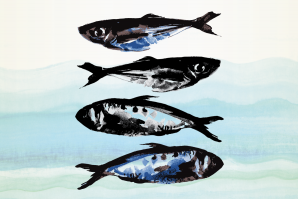
Fish, Out of Water
Prop. 1 channels billions of dollars to California’s water needs — but will it hurt or help endangered salmon?
On a warm August afternoon, a small fleet of tractors are busy in what seems to be an effort to smother the American River with rubble. But what appears to be the beginning of a new development project is nothing of the sort. Rather, these machines are trying to save fish.
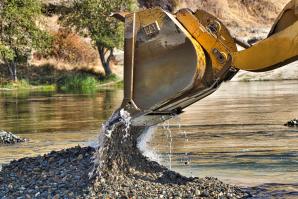
Fishy Repairs: The Salmon and Steelhead Restoration Project
As part of the Salmon and Steelhead Restoration Project, workers haul rubble to the shores of the American River just downstream from the Nimbus Dam, in an effort to restore streambeds.
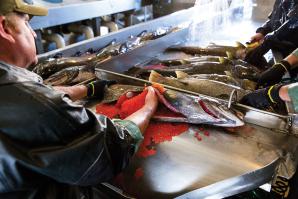
Counting Roe
The spawn of a salmon
Andy Heape has been a California Department of Fish and Wildlife technician at the Nimbus Fish Hatchery in Gold River — where he sorts, fertilizes and counts salmon — for 15 years.
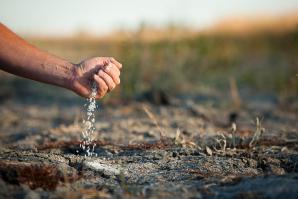
Of Rice and Men
On the Cover: Parched by years of drought, thousands of California’s rice fields lie barren
In the Sacramento Valley, where 97 percent of the state’s rice crop is grown, family farmers have been forced to fallow cropland they have worked for generations. The economic hit has been hard and true, affecting not just farmers, but seed distributors, equipment dealers and anyone else with a thumb in the rice business. The drought could cost Central Valley farmers and communities $1.7 billion this year and may lead to more than 14,500 layoffs.



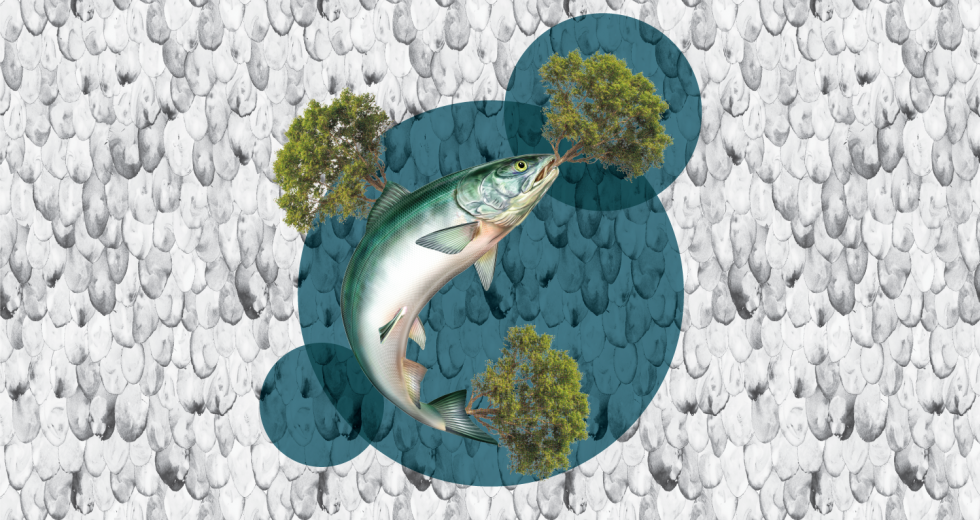
Comments
Surely, Mr Jasper sees the irony in his comment: We can get food from other farmers (in places with water) too...
Farming in the desert is not the answer. Here in the Delta our farming is sustainable - we are where the water is. Shipping surplus water south is fine - as long as it is surplus.
Just as important as the fisheries, is the matter of in-Delta and export water quality. We can't farm with salt water intruding from SF Bay - and cities receiving Delta water have less treatment costs as long as Delta water quality is maintained. (Even the BDCP plans to use through-Delta water (not tunnel water) about 50% of the time. ) Currently, DWR and the CVP are chipping away at Delta water quality standards. We all have to live with drought effects, but the fear here in the South Delta is that "temporary urgency" relaxation of standards will become the new normal.
It is time to recognize the limits of this system.
As for farm-raised salmon - not on my plate until better methods exist to prevent disease in the product.
Water will be shared and moved around during this drought - that is fine, but Delta water quality must be maintained through careful management of flows AND sustainable farming.
Thanks for the opportunity to comment.
Rogene Reynolds, South Delta